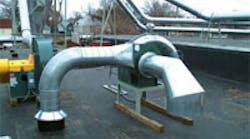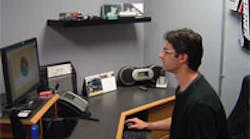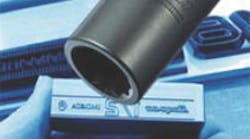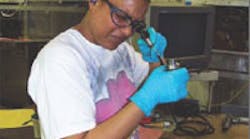Mears machines jet-engine blisks with Mastercam software.
When Mears Machine Corp. in Avon, Ind., started manufacturing jet-engine blisks, the parts each took about a week to cut. Now, the shop completes one in about 12 to 16 hours. How did Mears produce such a dramatic change in its manufacturing time? Dave Hess, vice president of the company, attributes it to several new high-speed, five-axis machining centers and, more significantly, the software used to program those machines.
Mears programs its machining centers, mills, lathes and EDMs for blisks and other jet-engine components using Mastercam CAD/CAM software from CNC Software Inc. (www.mastercam.com). Found in all jet engines, blisks compress air running through the engine and are an integral component in combustion chambers.
As a contraction of the words "blade" and "disk," blisk denotes an integrally bladed rotor design in which the disk and blades are produced as a single piece, eliminating the need for blade roots and disk slots. Mears machines blisks from solid materials such as titanium, Inconel and stainless steel.
The company also produces individual jet-engine air foils, called blades, that insert into engine rotors.
"For five-axis machine programming of air foils, it really can not be done any other way except with a product like Mastercam," says Hess. And he finds the software's surfacing capabilities most useful. "We've done plastic-injection mold work in the past. We don't do much now, but we still generate radii and contours between surfaces and other similar features," he says.
Mears cuts air foils on its four and five-axis machining centers using flank milling for roughing and 0.200-in.-diameter ball end mills for finishing. These operations run accurately and efficiently, in part, because of Mastercam's toolpath-verification feature and one that allows the shop to produce a printout for developing and processing part drawings.
"I use it (toolpath verification) for just about every job, and it helps locate mistakes before they affect a part," comments Hess. When cutting expensive air foils, he says that productivity suffers if the shop completes one and, afterwards, discovers the part is scrap.







